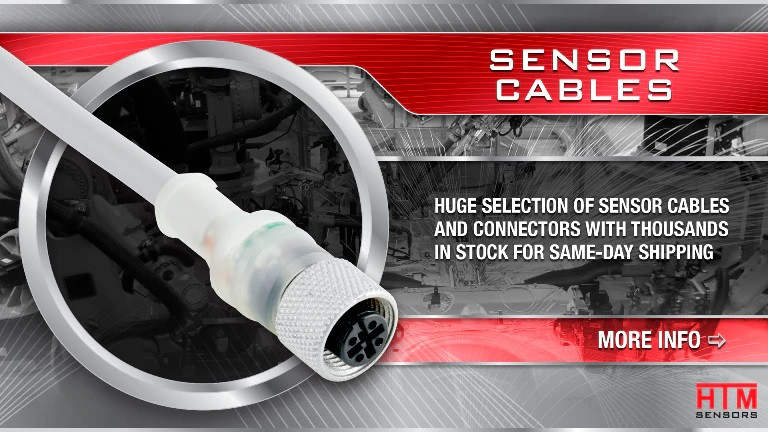There are many aspects of handling and mounting of sensors that play an important role in achieving optimal sensor performance and long life. But sensor connectors are only second in importance to the sensor itself among those aspects. Because of the impact of available space, uninhibited range of motion, temperature extremes, solvents and even moisture cables and connectors play a critical role in overall machine automation monitoring and action.
Inductive proximity sensors are the clear choice for motion-centric automation systems because of their simplicity of operation and wiring, ability to survive in harsh environments, and cost effectiveness. Axial cables and connectors designed for quick disconnect are chosen for similar reasons as they accommodate easy maintenance and replacement.
Many quick-disconnect cables come with a general-purpose PVC insulation, which poses few use or mounting challenges in highly stable environments. When machine automation operational environments are more challenging, Polyurethane (PUR) jackets deliver superior oxidation, oil, and ozone resistance.
Environmental conditions such as temperature extremes influence sensor cables and connectors by reducing operating lifespan and causing premature failure. Hot or cold temperature extremes will make sensors, cables and connectors more sensitive to shock.
Cutting fluids and chemicals that are used in machine automated processes are often present near mounted sensors. These compounds can take a toll on the sensors and the cables in the form of making them cracked and brittle thereby shortening their life spans.
Automated welding machines often found in auto assembly environments rely on automotive sensors and automotive sensor connectors to ensure process integrity. As a result, some proximity sensors are dipped in Teflon to increase performance reliability where cutting oils, corrosive chemical and weld slag buildup are present. Many cables and connectors are coated in silicon jackets, oil resistant PUR and spatter resistant thermoplastic elastic polymer (TPE)as an effective guard to the cable and connector in these environments.
Sensor mounting environment subject to extreme temperatures are also challenging to cables and connectors. Most inductive proximity sensors are designed to combat these extremes by being self-contained with silicon coated amplifiers and detection circuitry inside the sensor-head housing. These silicone infused sensors and silicone coated cables and connectors are capable of long operation in many environments.
These cables are designed to keep operating optimally in environments within the temperature parameters that range between −25°C and 70°C. Leading full line sensor providers can offer solutions to specific environmental conditions that exceed those parameters.
Moisture, oil, chemicals, and extreme temperatures can all lower the life expectancy of sensors and sensor connectors that are mounted within machine automation environments. But machine automation is highly varied and constantly evolving across industrial sectors, which can pose new challenges for sensor mounting and use. Those manufacturers offering a broad and evolving line of cables and connectors along with application-specific sensors are best poised to meet those evolving challenges.
 Canadian Dollars
Canadian Dollars
 USD
USD

